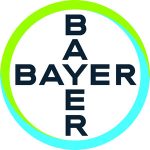In a move lauded by the pest management industry, the Safe Quality Food Institute (SQFI) announced toward the end of 2020 that the SQF Code Edition 9 for Food Manufacturing contains specific language endorsing the use of electronic monitoring devices in pest prevention programs. This new edition of SQF’s Code, which will be implemented starting May 2021, will guide participating companies in the implementation of some of the most stringent food safety management practices in the industry.
Specifically, section 11.2.4 of the SQF Code Edition 9, entitled Pest Prevention, details that for a pest prevention program to be effectively implemented, it shall “…Include the identification, location, number, and type of applied pest control/monitoring devices on a site map.” Additionally, the Code spells out numerous expectations for pest control providers, including that they “Provide a pest prevention plan (refer to 2.3.2.8), which includes a site map, indicating the location of bait stations, traps and other applicable pest control/monitoring devices.” SQF’s codification of electronic rodent monitoring systems is an acknowledgement of the important role played by electronic pest monitoring in modern food safety practices.
The American Institute of Baking (AIB) also recognizes electronic rodent monitoring in its food safety certification scheme. Specifically, section 4.11 of the AIB International Consolidated Standards of Inspection notes that rodent monitoring devices should identify and capture rodents that gain access to a facility and includes among the acceptable monitoring options “extended trigger traps that send alert e-mails or text messages.” AIB’s schematic points out that remote monitoring devices may play a particularly relevant role in facilities in countries or regions where the use of mechanical traps is prohibited.
While SQF is the first GFSI Certification Program Owner (CPO) and AIB is the first Certification Body (CB) to formally include electronic rodent monitoring in their protocols, it is only a matter of time before other certification programs, certification bodies and recognized standards such as GMP/HACCP follow suit.
A discussion of electronic pest monitoring and a remote, digital rodent monitoring system, that provides 24/7, real time status alerts, for the food industry, may seem like a big leap forward. However, it was only a short time ago that many in the food industry needed to be convinced that a transition from a manual, pen and paper monitoring system of cold storage temperatures to a fully automated, 24/7 digital monitoring system with real time alerts, was needed. This is an example of technology being used in a meaningful way to eliminate the time-consuming aspect of certain important tasks and allow more time to be devoted to activities that contribute to the process of continuous improvement.
As remote and electronic monitoring systems, such as the Bayer Rodent Monitoring System (RMS), become better known and understood and their important role in elevating IPM programs more obvious, it is becoming clearer that auditing bodies will begin considering the presence of such systems in their evaluation protocols, even if formal changes to various standards lags behind.
If you are in doubt as to whether or not the next auditor, regulatory or non-regulatory, that will walk into your facility understands the role electronic rodent monitoring plays in supporting a robust food safety management program, take the lead on this important issue and raise the subject prior to your next audit.
References
Related content: Use of Remote Rodent Monitoring with Regard to Food Safety Regulations and Current Pest Control Practices.
 |
Content Sponsored by Bayer Rodent Monitoring System. |




